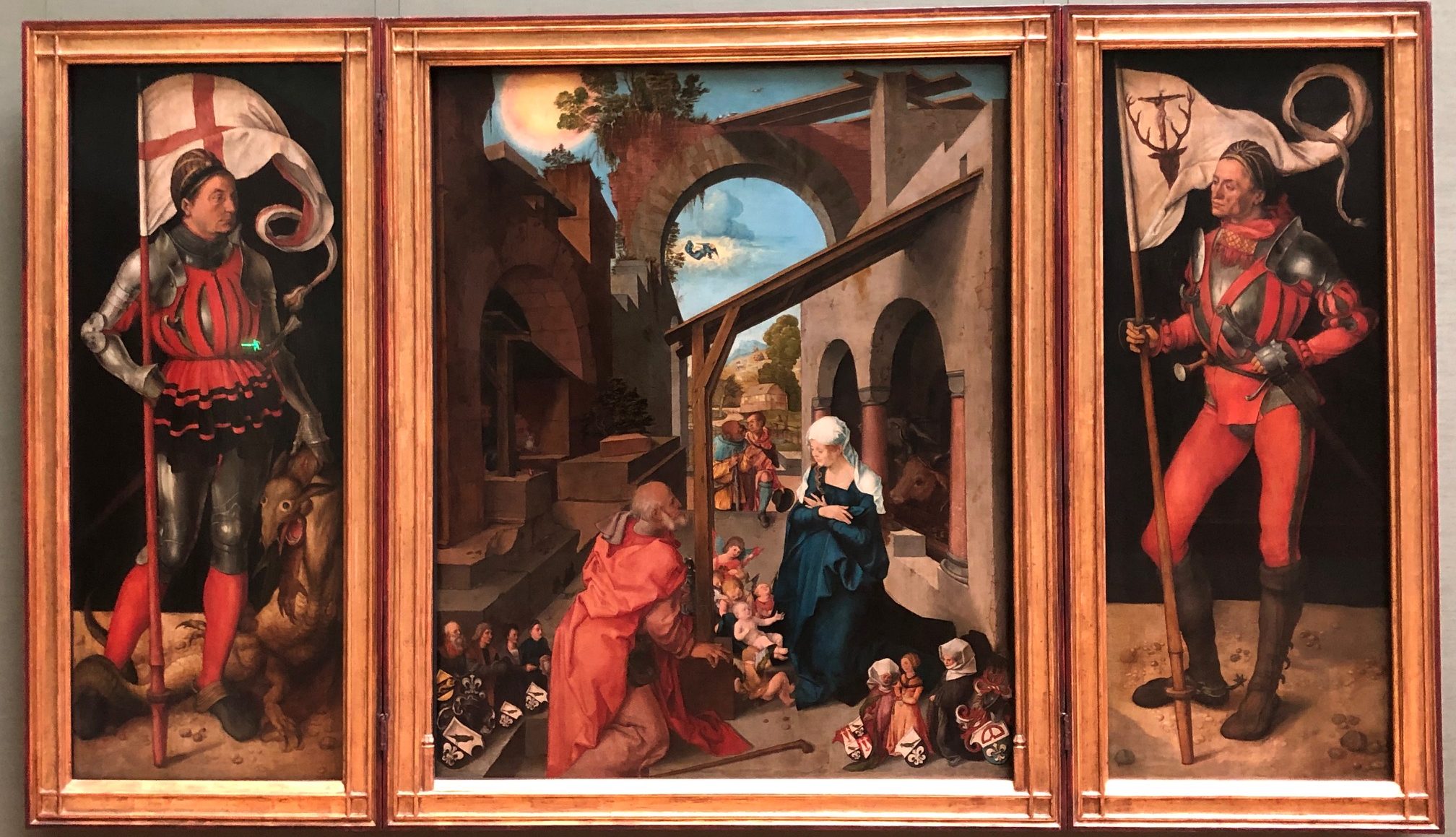
In 15th and 16th century Europe donor recognition was negotiable. The biggest donors gave to the church, but the best way to be recognized in a durable way was to underwrite religious art. Albrecht Dürer’s circa 1500 triptych, the Paumgartner Altarpiece, is one of the most arresting examples of the complex dynamic that did, and still does, shape the process of showing gratitude to donors.
Donors as Servants
The main event in Dürer’s altar is a nativity scene: Mary, Joseph and the Christ Child in a ruined church/stable. There are a few small angels and shepherds. As if an afterthought, there are little people on the either side of the holy family. Four kneeling men on the left and three kneeling women on the right. The donors. All members of the Paumgartner family of Nuremberg. The father was dead 20 years before the painting was completed. No matter. Humble devotion is a timeless family affair.
Tiny donors kneeling at the margins of a great event. Servants. They are important enough to be included in the scene, but their size makes their relative insignificance clear.
Donors as Saints and Super Heroes
But wait. There are two more panels. On the left is St. George with a gargoyle dragon; on the right is St. Eustace with his stag-head banner. They look like super heroes. And they have a remarkable resemblance to two of the tiny donors: Stephan Paumgartner is St George and Lukas Paumgartner is St Eustace.
The triptych contains a few donor recognition truths.
1. Donors are generally dedicated to the work they fund. They admire and are (ideally) engaged by the work. Structurally, they are secondary figures who play a background role. Servants to the cause whom nonetheless need to be acknowledged.
2. Major donors like to see themselves in the story. They want to be part of something larger than themselves. As funders, they are active participants in the cause – elevated by proximity and pride (despite their modesty).
3. Legacy – with its promise of secular immortality – has long been intermingled with donor recognition.
4. Large donations are often family affairs, at least in terms of public recognition.
5. Donors may assume the guise of saints, but some wish to be perceived as super heroes. Donor recognition can define them and may end up overwhelming the cause itself.
It’s unclear if the Paumgartners were brilliant negotiators who actively defined their own legacy or only beneficiaries of the unspoken “donor recognition policy” of the time. Either way, Dürer had a subtle genius for combining images of humility and grandeur. The Paumgartner Altarpiece is a 500-year-old playbook of philanthropic psychology and legacy creation.

3 Comments
Peggy Killeen
July 26, 2019 - 3:05 pmLove this great illustration of stewardship practice and the art history lesson. Thanks Malcolm!
Charles O’Neil
July 31, 2019 - 1:16 pmThanks Malcolm. Your contributions are always thought provoking and educational. As an aside I can’t imagine the parochial turmoil that would be created today should donors want their likeness portrayed on a stained glass window! Sometimes a simple plaque is controversy enough.
Malcolm Burrows
July 31, 2019 - 2:02 pmThanks Charles. Glad you found of interest and relevance. I know of a few donor portraits at Canadian institutions, but none hit the superhero heights of Durer. Cheers, Malcolm